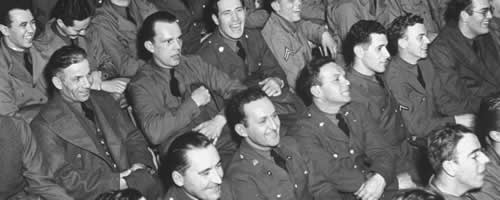
Photo courtesy of the Life Archive powered by Google
Foreword:
In the collecting and reenacting world, there is considerable discussion of “prewar,” “early war,” “mid-war,” and “late war” configurations of the United States Army uniform. Many reenactors start with a basic garrison & field set-up, including the OD shirt, trousers, field jacket, and garrison cap. Some never go much beyond this, but for those who are interested in outfitting themselves with (or just learning more about) a period-authentic service uniform, we are posting two versions of the original wartime Army Regulation 600-40 Wearing of the Service Uniform. This was part of a series of uniform regulations, the main other title in the series being AR 600-35 Prescribed Service Uniform, which specified the details of the various items of uniform and insignia for personnel of the U.S. Army.
Changes to AR 600-40
The August 1941 version accrued so many changes (30!) that a new version was published in March 1944, which was also changed several times by the fall of 1945; interestingly, changes 5 and 6 were essentially reprints of change 4. Originally, the regulations were published, and the changes followed in the form of a small pamphlet that included only the changed paragraphs. Units could simply attach the new material to the existing paper copy using glue, staples, in a binder, etc. Many actually cut out the new text and pasted the changed paragraphs in place of the original.
Here we have added all changes – with dates of change where indicated in the original documents – in order and in their correct places for both the 1941 and the 1944 editions. They are additionally indicated by changed text color here for visual clarity. Pictographic changes are still black & white, but figure titles reflect the color changes. Note that some of the updates are very minor, with only a few words added, changed or deleted, while others are more substantial.
Regulation changes which added new items (headwear, jackets, etc) typically corresponded fairly closely with the item’s widespread adoption by the Army. Also, changes to the regulations were effective as of the publication date; such policies as specified wear-out dates and phase-in periods, common in the U.S. Army of later decades, were unusual. However, this mainly applied to insignia and uniform accessories such as headwear; older garments typically were not entirely discarded in favor of newer items, but were made optional or “limited issue” until replaced.

Changes to AR 600-40, August 28, 1941
1 August 14, 1942 (6 pages)
2 August 25, 1942 (2 pages)
3 August 29, 1942 (1 page)
4 September 5, 1942 (1 page)
5 September 19, 1942 (2 pages)
6 September 28, 1942 (1 page)
7 October 23, 1942 (1 page)
8 November 2, 1942 (1 page)
9 November 26, 1942 (2 pages)
10 December 29, 1942 (1 page)
11 January 21, 1943 (2 pages)
12 March 6, 1943 (1 page)
13 March 26, 1943 (1 page)
14 April 2, 1943 (1 page)
15 April 24, 1943 (6 pages)
16 April 29, 1943 (3 pages)
17 May 12, 1943 (1 page)
18 May 15, 1943 (2 pages)
19 3 June 1943 (1 page)
20 7 June 1943 (1 page)
21 17 June 1943 (1 page)
22 19 June 1943 (1 page)
23 25 June 1943 (1 page)
24 5 July 1943 (1 page)
25 8 July 1943 (1 page)
26 9 July 1943 (1 page)
27 12 July 1943 (1 page)
28 20 July 1943 (1 page)
29 10 August 1943 (1 page)
30 14 September 1943 (1 page) |

Changes to AR 600-40, 31 March 1944:
1 11 August 1944 (2 pages)
2 28 November 1944 (2 pages)
3 18 April 1945 (4 pages)
4 25 July 1945 (2 pages)
5 23 August 1945 (2 pages)
6 30 August 1945 (2 pages)
7 31 October 1945 (1 page) |
Frequent topics regarding the service uniform include are highlighted below:
Ties: In August 1941, there were two neckties, black and khaki. The black tie was for wear whenever the service coat was worn, as well as for when the OD shirt was worn without the service coat.
The khaki tie was worn with the khaki shirt when worn without the service jacket. When worn without the service coat, neckties were to be tucked into the shirt between the first and second buttons.
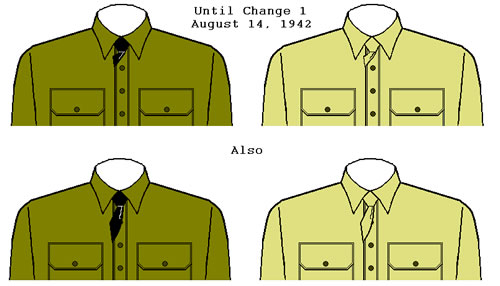
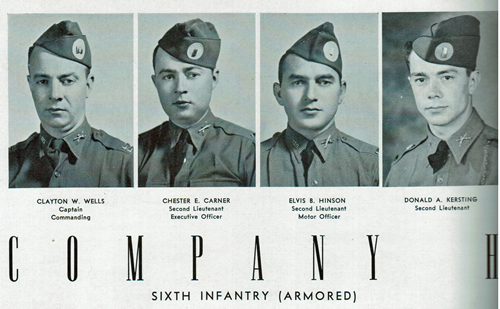
This seems to have been interpreted in two ways, however; photographic evidence shows soldiers tucking the tie both between the first (collar) and second buttons, as well as between the first (visible below collar) and second buttons.
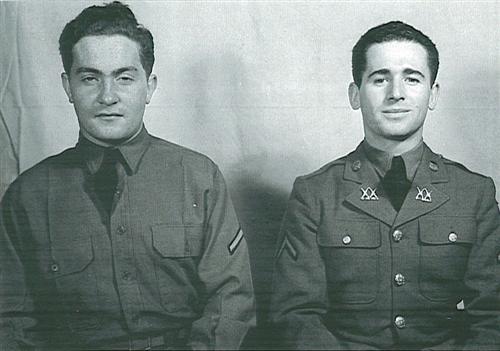
In August 1942, Change 1 eliminated the black tie and clarified that ties be tucked into the shirt between the first and second visible buttons; the collar button being rendered invisible by the knot. (Paragraph 31) The 1944 regulation kept the 1942 changes intact. (Paragraph 39)

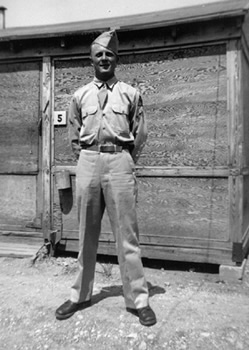
Shirts: The 1941 regulation stated clearly that “either the olive-drab shirt or the khaki shirt may be worn when the service coat is worn. Commanding officers may authorize the wearing of the service olive-drab or khaki shirt without the coat.” No changes affected this paragraph. (Paragraph 32)
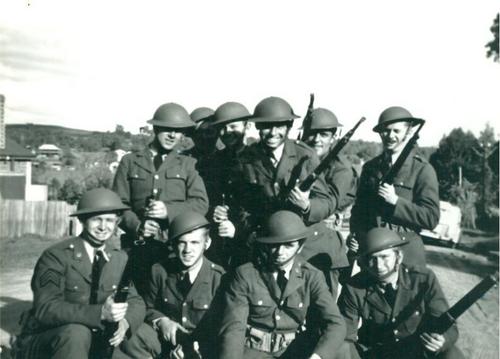
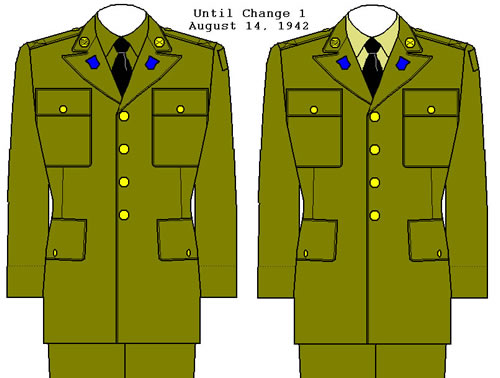
By 1944, the terms “olive-drab” and “khaki” had generally been replaced by “wool” and “cotton” in reference to the service uniform. “Any prescribed or authorized shirt may be worn when the service coat is worn.” (Paragraph 40)
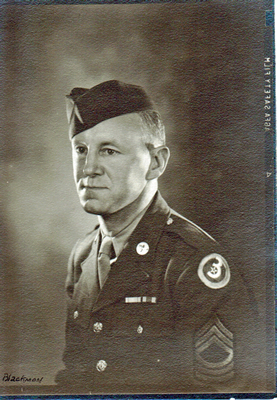 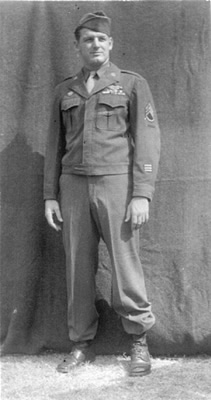
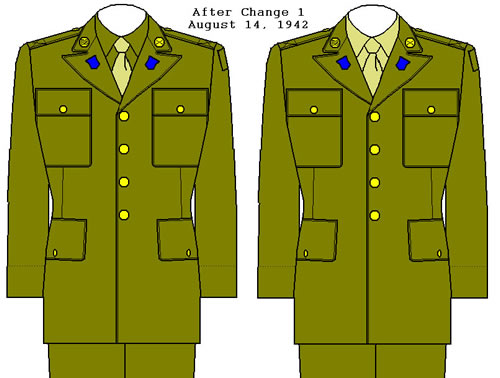
Shirt collar insignia: From August 1941, only commissioned and warrant/flight officers were prescribed collar insignia. The regulation specified that when the shirt was worn without the service coat, the officers’ “U.S.” was to be worn in parallel to and 1 inch from the front edge of the right collar, while the insignia of arm or service would be placed similarly on the left collar. Change 2 in August 1942 replaced the “U.S.” with the insignia of grade. (Paragraph 44) The 1944 version maintained these and subsequent minor changes. (Paragraph 52)
Sleeve insignia: This topic generally includes shoulder sleeve insignia (SSI, sometimes referred to as “unit patches”), chevrons to denote grade of enlisted personnel, enlisted service stripes (“hash marks”), and overseas service bars (“Hershey bars”). Questions often arise regarding placement of SSI and enlisted grade. Chevrons to denote grade were to be “worn on all coats, the field jacket, the olive-drab and khaki shirt when worn without the coat, and on work clothing. They will be worn on the outer half of both sleeves, points up, midway between the elbow and the top of the sleeve.” (Paragraph 46) SSI were originally authorized only on the service coat and shirts, but Change 1 added them to the overcoat and field jacket as well, and Change 9 of November 1942 added SSI wear to the mackinaw. Placement of the SSI was specified as the upper left shoulder, ½ inch below the shoulder seam on all authorized items. (Paragraph 47)
Cap insignia: Paragraph 51 and figure 1 of the August 1941 regulation specified that all personnel would wear the unit distinctive insignia (DI) on the garrison cap on the left side, with the forward edge 1 inch from the front and ½ inch up from the bottom of the cap. In August 1942, Change 2 abolished wear of the DI by officers and replaced it with insignia of grade (specifications in paragraph 42). No changes affected wear by enlisted soldiers until the new March 1944 regulation required placement of the insignia centered on the curtain of the cap with the DI’s vertical centerline 1 ½ inches from the front of the cap. (Paragraph 67; Figure 1)
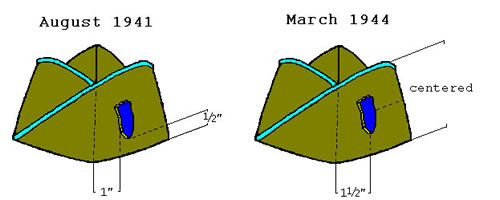
Officer insignia were to worn in a corresponding position. (Paragraph 50; Figure 1)
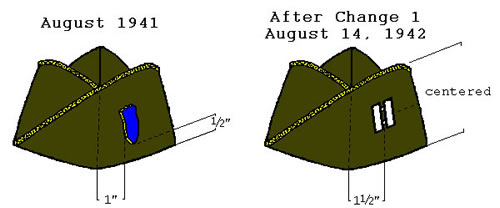
Awards and decorations: Placement and order of wear of medals and ribbons is a topic of some interest among reenactors. The paragraphs dealing with medals specify order of wear of authorized awards; they also specify that service medals (including campaign medals) were to be worn “in order of the date of the service performed.” (Paragraph 53 [1941]; Paragraph 69 [1944]) The 1941 version specifies that ribbons may be worn on the service coat and, if authorized by the commanding officer, on the khaki shirt.
In September 1942, Change 4 authorized wear of ribbons on the OD and khaki shirts at the wearer’s option. When more than one row of ribbons was worn, a space of 3/8 inch was required between them. (Paragraph 56) The only change to this in the 1944 regulation was the reduction of the space between multiple rows to ⅛ inch. (Paragraph 73)
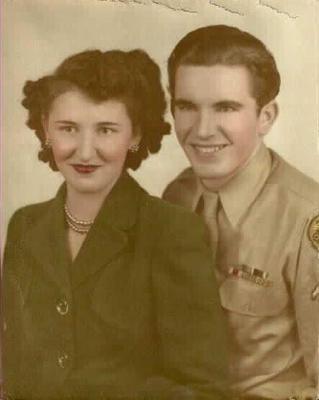
A note on belts: Paragraph 60 of AR 600-35 Prescribed Service Uniform, dated November 10, 1941, notes a russet leather belt 1 ¾ inches in width for wear by enlisted men and warrant officers. Interestingly, AR 600-40 contains no mention of this belt for enlisted men, except for aviation cadets. In August 1942, Change 1 deleted wear of the belt for aviation cadets and made leather belts optional for commissioned and warrant officers. Change 20 in June 1943 eliminated their wear completely, replaced by the cloth belt. Officers of the Army Air Forces were not authorized a leather belt, as the service coat prescribed for these officers included a permanently sewn cloth “belt” with no buckle above a fourth button. (Paragraph 59)
Conclusion:
As with all other questions of authenticity in living history and military reenacting, research is paramount. Photographic, anecdotal and other types of evidence are critical. Uniform regulations are an important tool, but may not account for local or command-wide policies or practices that differed. Additionally, enforcement of regulations varied from unit to unit and over time.
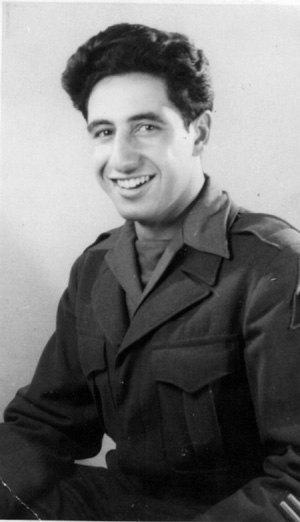
|



















